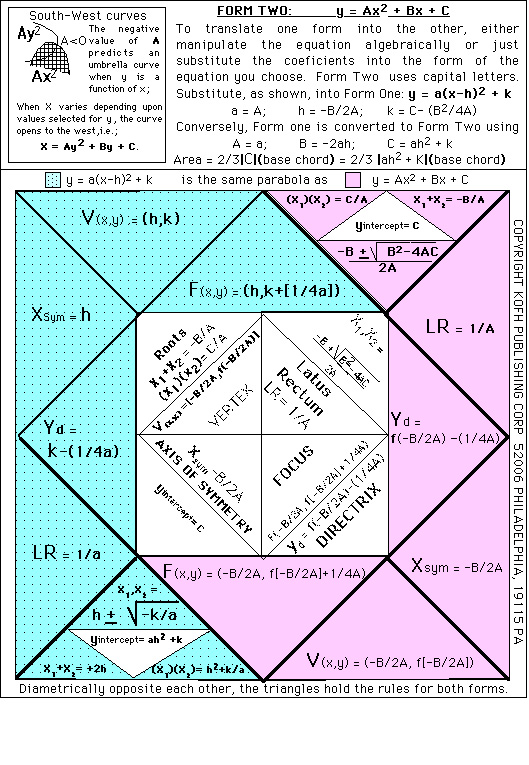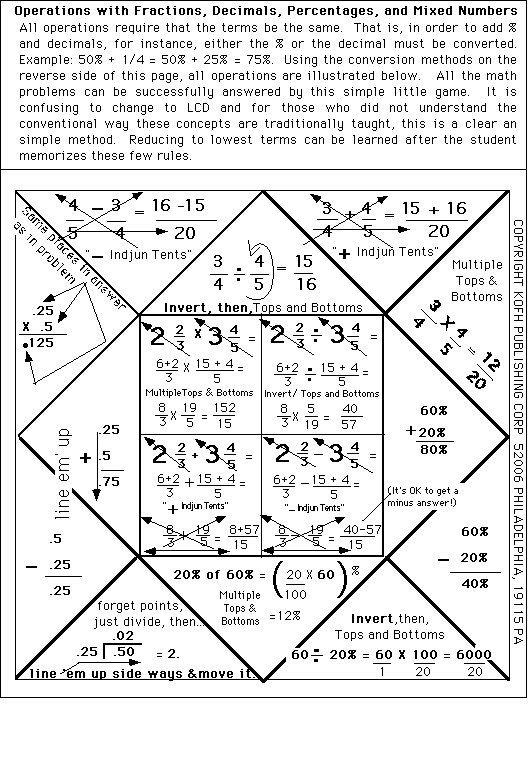|
Sample Lesson:
A close examination of the information on this sample Lotus Leaf page shows that students can learn how to transform
between the two forms of the equation for a parabola. The various variables can easily be discovered by substitution of coefficients. The
traditional work involved in transposing from one general equation into another in order to obtain the traditional coefficients
used to find roots can be shortcut if this page is closely examined.
This reduces the work immensely.
The fact that this is possible but usually omitted from the standard text books not withstanding, this ought be a final
lesson and useful double check on the Algebra. Such information and lessons are recommended after the traditional
exercises are practiced.
The 16 Lotus pages cover the standard Algebra II text book chapters. This project-oriented-assignment is
a break in the normal instructional routine. Lotus Leaf Algebra is not intended to replace traditional exercises
and presentations, but is a supplemental set of lessons to reinforce and organize content The Lotus pages collect
all the various identities into neat clear groupings. Students can be taught to use the notebook in order to find
powers, roots, log transformations, etc. Nevertheless, it is recommended that students are encouraged to attack
Algebra assignments with these graphically organized pages of rules available to them as they work.
| EACH PAGE FOLDS AND FINDS INSIDE THE LAST |

|
A Review Lesson for manipulating Fractions, Decimals, and Percentages is also included. Transposing terms
is one area of weakness which students bring to the Algebra Class. This method graphically represented below uses multiplication
of the numerator and denominator in most all cases, and avoids the teaching of Lowest Common Denominators. This
makes the "rules" rather straight forward, in the students are instructed to multiple in every case. The various possible
exercises and required operations with mixed numbers and fractions, decimals, and percentage are show as examples below.
Teachers ought find this useful double checking on student readiness before the Algebra Lessons are presented.

This review may be followed with algebraic examples like multiplying a/b X c/d and such exercises. Examples
like the following have been found beneficial to many students: [X +(a/b)] - [Y+ (c/d)] = (Xb +
a)/b - (Yd + c)]/d = d[(Xb + a)/bd- b[(Yd + c)]/bd
|

